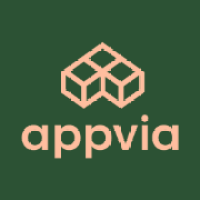
UK Cloud Solution Provider Appvia – 8 Lessons Learned from being Remote Ready
December 1, 2020
At Appvia a cloud solution company designed their company to be "Remote First" adopting from the outself collaboration tools such as Slack and Google.
8 lessons they have learned being remote ready and thriving in these troubled times


1. Get better transparency by integrating your communication tools:
Tools like Slack, allow you to integrating other third-party products we integrate- Code repositories to automatically report changes, Pull Requests and reviews Reviews requested by team members
- Cloud/infrastructure visibility of changes, costs or general activity you find useful as a team or organisation.
- Channels for critical communication such as production issues or security warnings that require a more rapid
2. Use cloud services to reduce infrastructure bottlenecks
In volatile times elastic cloud infrastructure has become more valuable than ever. Online retailers are seeing higher than usual loads, other companies want to scale back and manage their cash-flow. Managed cloud services for compute and storage will give you this flexability.3. Moving services that need to scale to the cloud
Although Cloud gets a lot of air time in the industry, a lot of application services still run on invested infrastructure, either in office buildings or co-located. Depending on the design of the service, the infrastructure and technologies surrounding it can often be a bottleneck and cause scalability challenges. Looking at porting services that drastically need to scale with demand to the cloud is a good way of removing that bottleneck.4. Invest in good monitoring and telemetry technology
It exposes the right metrics so services can scale up and down to cope with demand and keep costs low. There’s no better way to meet demand than exposing metrics that define how your applications should scale. This could be specific application indicators based on the number of transactions or more operational based metrics like CPU and memory. Having good telemetry in your application stacks will also help improve visibility of latency across your stack or bottlenecks in infrastructure quickly, getting you to a resolution at a much quicker rate.5. Use lightweight container technologies for local testing.
If there are dependencies between teams, such as needing virtual machines to be provisioned before developers can test their code appropriately, then adopting container based technologies will enable them to test code quickly and iterate faster. By being able to simulate an environment on their developer machine without needing infrastructure or resource intensive technologies like virtual machines speeds up testing features, environment consistency and getting releases out at a faster rate.6. Use container orchestration technologies like Kubernetes or serverless
If your developers have made the move to containers or function driven development with serverless, then implementing Kubernetes on your infrastructure or providing serverless based technologies will make the release of applications across environments so much faster. By being able to create environments in seconds rather than hours, days or weeks will get those features tested and released to your customers in no time. In addition to this it also reduces the overhead on infrastructure capacity by sharing resources more sensibly.7. Continuous Integration, (CI) systems.
When development teams are committing features, it’s critical that there is visibility on the testing outcome of those features centrally. Having a CI system that shows what is failing where will help speed up remediation or developers tripping over one another. Preventing any features being able to be merged on CI failures will also keep the hygiene of the code up. Integrating CI into collaboration tools like Slack gives teams instant feedback in a central place and helps improve that transparency on what is going on8 Stay secure whilst delivering quickly
Time pressures can make it easy to compromise on security. Scaling securely is a difficult task, especially when it isn’t a visible tangible feature the business can appreciate.
We maintain a plan and lessons learn that we apply before any form of adoption of new technology.
Leverage SaaS features, such as Githubs vulnerability identification that at least enable developers to quickly visualize and remediate potential code vulnerabilities and exploits. Make sure that you are aware of gaps in your workflows, products and processes and have a plan to remediate effectively.
Contact Appiva
The move to new technologies, especially cloud, is complex, and with teams working remotely it becomes even harder. We want to support businesses in those difficult times by providing a 30 minutes FREE consultation with one of our Solutions Architects. https://www.appvia.io/contact-us

